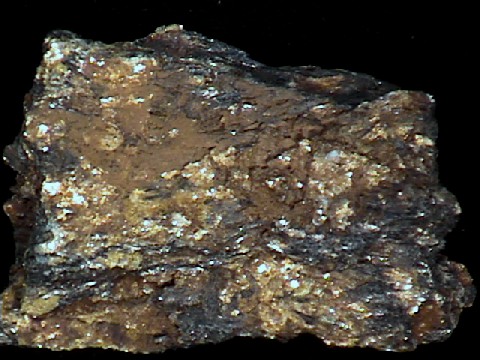 THE MINERAL GLAUCOPHANE
THE MINERAL GLAUCOPHANE
- Chemistry: Na2 (Mg, Fe)3Al2Si8O22(OH)2, Sodium Magnesium Iron Aluminum Silicate Hydroxide.
- Class: Silicates
- Subclass: Inosilicates
- Group: Amphibole
- Uses: Only as mineral specimens.
Specimens
Glaucophane is named from its typical blue color (in Greek glaucophane means "blue appearing"). The blue color is very diagnostic for this species. It, along with the closely related mineral riebeckite are the only common amphibole minerals that are typically blue.
Glaucophane forms a solid solution series with ferroglaucophane; Na2 (Fe, Mg)3Al2Si8O22(OH)2. Glaucophane is the magnesium rich member and ferroglaucophane is the iron rich member. Ferroglaucophane is similar to glaucophane but is denser, generally darker in color with a diminished pearly luster.
Glaucophane is formed typically in a highly metamorphic zone known by the geologic term blueschist facies. This facies forms from material caught under subduction zones in mountain belt regions. This material has undergone intense pressure and moderate heat as it was subducted downward toward the mantle. Its glaucophane's color that gives this facies its name. Glaucophane is also found in eclogites that have undergone retrograde metamorphism.
PHYSICAL CHARACTERISTICS:
- Color is blue to dull gray.
- Luster is vitreous to pearly.
- Transparency: Crystals are generally translucent.
- Crystal System is Monoclinic; 2/m
- Crystal Habits include scarce prismatic to acicular crystals, usually fibrous, granular or massive.
- Cleavage is imperfect in two directions at nearly 56 and 124 degrees.
- Fracture is conchoidal to splintery.
- Hardness is 5 - 6.
- Specific Gravity is approximately 3 - 3.2 (slightly above average for non-metallic minerals).
- Streak is pale gray to blue.
- Other Characteristics: Pleochroic.
- Associated Minerals include
chlorite,
epidote,
lawsonite ,omphacite , garnets, albite,barroisite , cummingtonite, aragonite, sphene, rutile, quartz, jadeite, actinolite andpumpellyite . - Notable Occurrences include the type locality of Syra Island, Cyclades Islands, Greece as well as numerous localities in the Coastal Range of California and the Kodiak Islands, Alaska, USA; St. Marcel, Val d'Aosta and Piollore (Biella), Italy; Anglesey, Wales, UK; Australia and Japan.
- Best Field Indicators are crystal habit (especially cross-section), color, luster, environment of formation, associations and cleavage.


